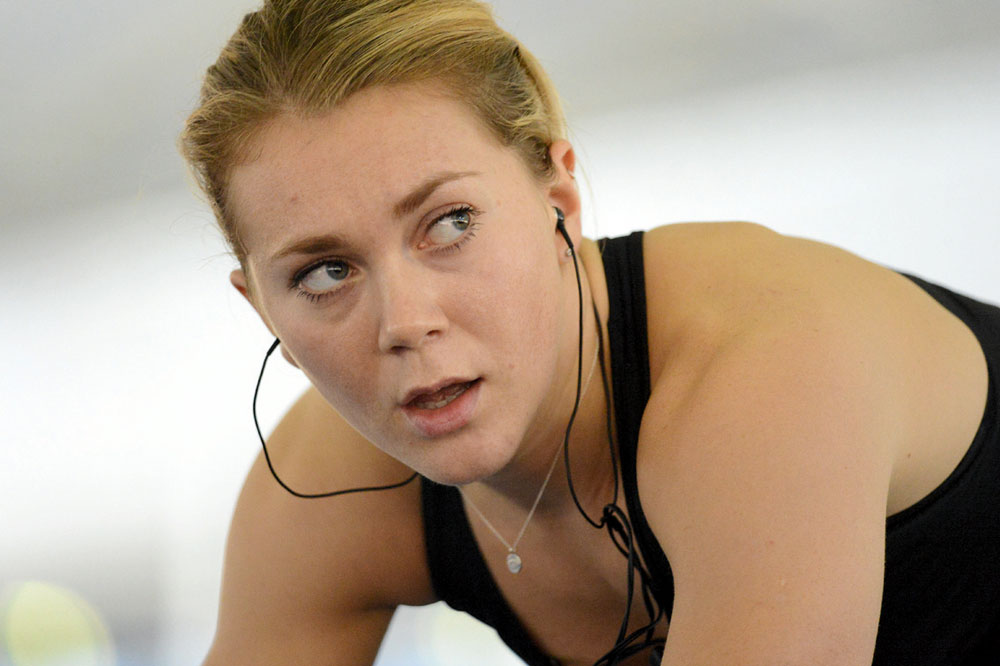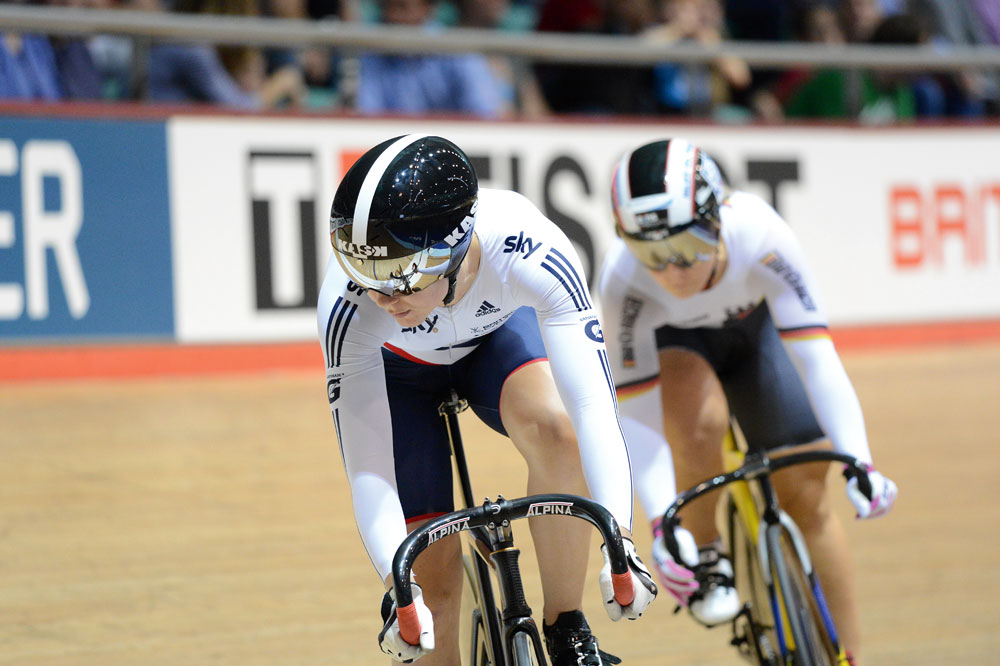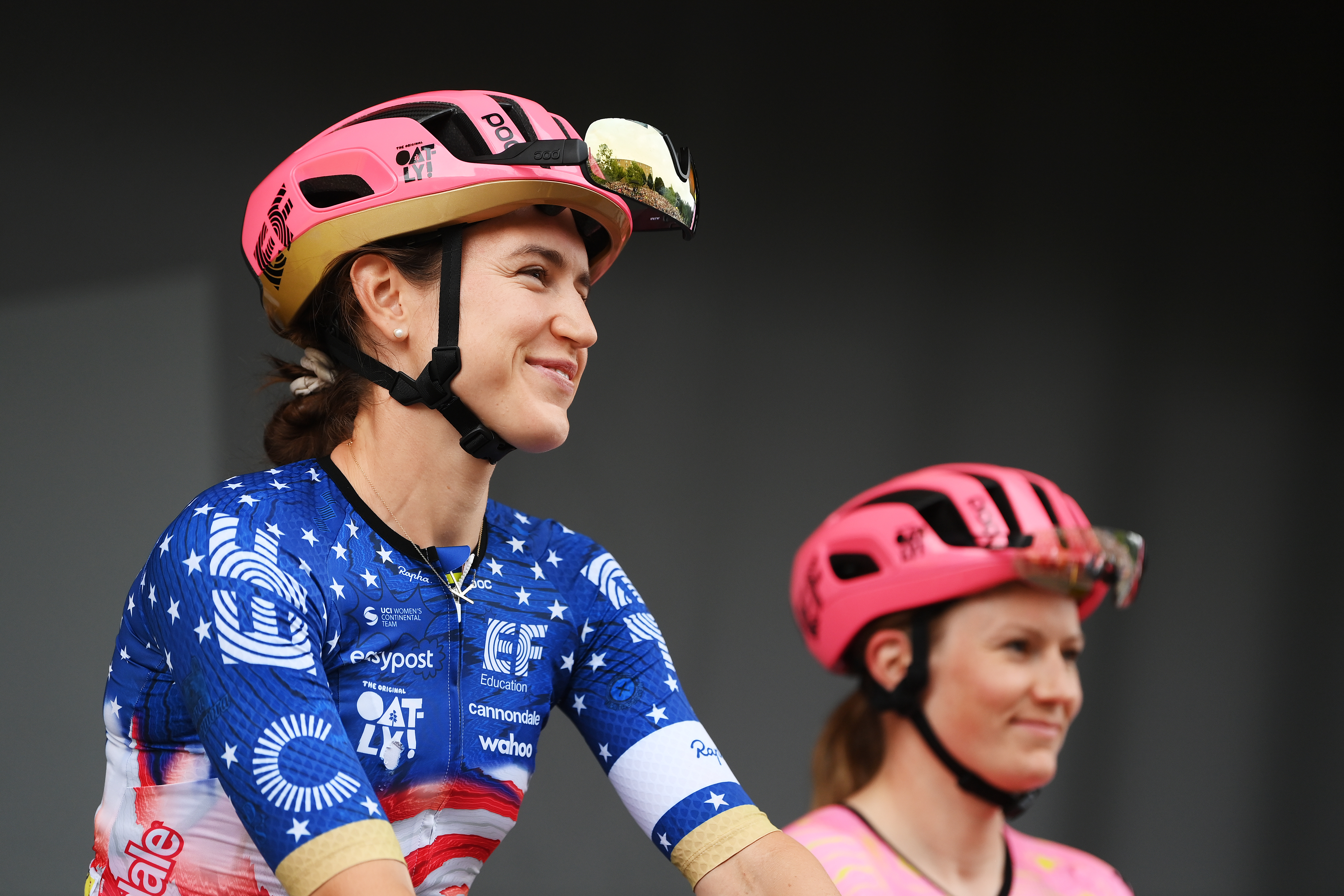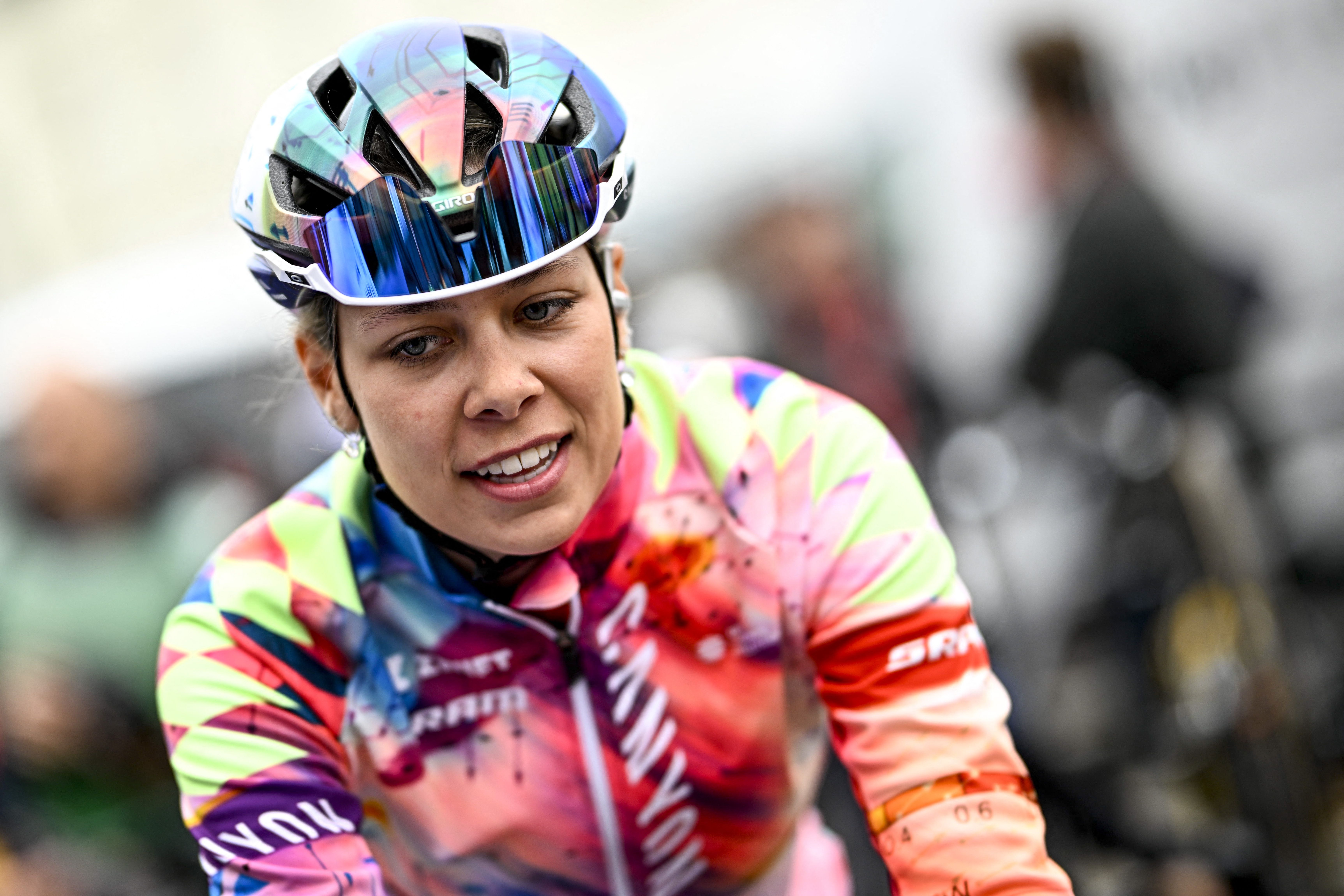My week in training: Jessica Varnish

Sprint training is specialised. When Jess Varnish does a week like this one, working on strength, she rides outside only once, and sees little other daylight, except while walking her dog Hugo. The rest of the time she's inside Manchester Velodrome, either on the track or in the gym.
Monday
Gym session in the morning; track in the afternoon.
"I'm in a strength phase of my weight training now, so that means things like deadlifts and other stuff for my legs, plus some upper-body lifting. They are fairly heavy lifts too.
"The afternoon was spent on the track doing sprint accelerations. That's riding steady then accelerating like you would at the beginning of a match-sprint effort. You back off when you reach full speed, then roll around the track to recover."
Tuesday
Track in the morning; rest in the afternoon.
"The track work was cadence work, really fast pedalling, sprinting in a much smaller gear than I'd normally use. It's not quite as simple as that, because it also involves something else we've discovered that helps but which we don't want to share. Basically this is work to increase leg speed."
CW says
Sprinting is about increasing force on the pedals and increasing the speed with which that force can be applied, then increasing pedal rev speed. Apply lots of force over a short space of time and you have a fast-accelerating sprinter with high top-end speed. Varnish's strength training is designed to increase the force she applies to the pedals. Accelerations and leg speed sessions increase the speed with which that force is applied.
Get The Leadout Newsletter
The latest race content, interviews, features, reviews and expert buying guides, direct to your inbox!
Wednesday
Gym in the morning; Pilates in the afternoon.
"The gym session was the same as Monday's, working on strength. Our weight training goes through different phases depending how far out we are from a target. At the moment I'm training for the 2014 World Track Championships.
"I did Pilates in the afternoon. I've just started this and I'm doing it because I had a back injury earlier in the year that cost me a lot of time out from training. I think sprinters are prone to back injuries because we put our backs under a lot of strain when doing standing starts."
Thursday
Gym in the morning; track in the afternoon.
"The gym training was dynamic strength training. It's like plyometrics - running and standing jumps and stuff like that. In the afternoon, I did standing starts. That doesn't sound much but it's full-on."
CW says
For a number of reasons, sprinting puts a sprinter's back under incredible loads. Their powerful muscles exert huge forces during the first few pedal strokes of a start, and that force has to be transferred through bones and soft tissue before it reaches the pedals.
Sprinters have the power to practically pull themselves apart. They train using heavy weights and the fact that they unleash maximum force very abruptly means the strain can be enormous. Plyometric training helps a sprinter build on the naturally explosive nature of their fast-twitch-fibre-dominated muscles.

Her aim is Rio: Varnish is on track for the 2016 Olympics
Friday
Gym session in the morning; rest in the afternoon.
"The gym was strength training using weights again, and this was my first week of full-on training since fully recovering from my injury, so I needed all the rest I could get."
Saturday
Road ride
"My one and only road ride of the week. It's nice to get out and enjoy the countryside. Even sprinters need a bit of endurance and an extended stint of pedalling."
CW says
Varnish does three big weight sessions a week, lifting free weights in classic moves like squats, dead lifts and cleans. All Team GB sprinters do this and they all have great technique. Some of them even perform well enough to compete with weight-lifters without getting out-classed. Her regular road ride is as good for Varnish's morale as it is for her body.
Like many other sprinters, she went into sprinting from a general cycling background and was drawn to the sport because she enjoyed cycling in the countryside. Sprinters vary this aspect throughout each training cycle and sometimes do more and longer road training sessions. Many go on training camps in Majorca and put in quite big road mileage.
Sunday
Rest day
"This is the one day I can take it easy and relax all day, and along with Saturday it's an opportunity to get outside, which is even more important during the dark winter months."
CW says
This is a very specialised week in training done by a sprinter, but there are things all cyclists can take from it. The most important thing is specificity. As much as Varnish enjoys cycling outdoors, she can only do it once a week during this key block of training.
The rest of the time she must lift weights, do other gym stuff and warm up and down between a few flat-out efforts on the track. But that training is the essence of sprinting, and British Cycling sprinters are brought up with the mantra that every sprint or start-gate effort must be ridden full-on - as if it were a World Championship or Olympic final.
Importance of conditioning
Aside from specificity, there are other things to be learned from this training week. One is that weaknesses must be addressed and rectified. Varnish's back has to bear incredible loads, and she has already been injured because of it, so she's conditioning and supporting her back by doing Pilates.
That should build the smaller muscles that support her back and keep it aligned properly, and so prevent her bigger power muscles causing damage. She also uses plyometrics as a way of improving the explosive side of her sprint. It sometime pays to look outside your sport for something that might provide a gain, however marginal.
This article was first published in the January 9 issue of Cycling Weekly. Read Cycling Weekly magazine on the day of release where ever you are in the world International digital edition, UK digital edition. And if you like us, rate us!

Thank you for reading 20 articles this month* Join now for unlimited access
Enjoy your first month for just £1 / $1 / €1
*Read 5 free articles per month without a subscription

Join now for unlimited access
Try first month for just £1 / $1 / €1
Founded in 1891, Cycling Weekly and its team of expert journalists brings cyclists in-depth reviews, extensive coverage of both professional and domestic racing, as well as fitness advice and 'brew a cuppa and put your feet up' features. Cycling Weekly serves its audience across a range of platforms, from good old-fashioned print to online journalism, and video.
-
 'I've worked a lot on my sprint' - Kristen Faulkner plots unpredictability on racing return
'I've worked a lot on my sprint' - Kristen Faulkner plots unpredictability on racing returnOlympic champion looking forward to "exciting challenge" of continuing to outfox bunch
By Tom Davidson
-
 'This is a fresh start' - Belgian rider returns to professional cycling after two year anti-doping ban
'This is a fresh start' - Belgian rider returns to professional cycling after two year anti-doping banShari Bossuyt to ride for AG Insurance-Soudal from June
By Adam Becket